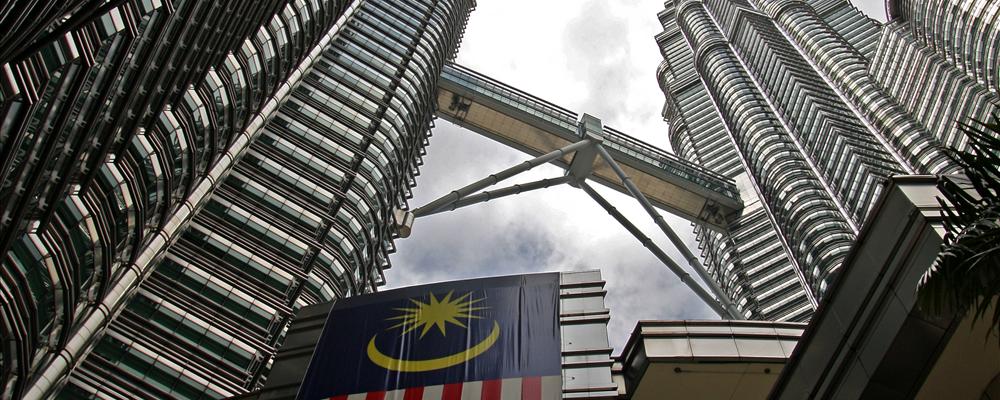
Kuala Lumpur
( 1 user review )Kuala Lumpur , or simply KL, is the capital of Malaysia. Literally meaning "muddy estuary" in Malay, KL has grown from a small sleepy Chinese tin-mining village to a bustling metropolis of around 6.5 million (city-proper population of 1.6 million) in just 150 years. With the world's cheapest 5-star hotels, great shopping and even better food, increasing numbers of travellers are discovering this little gem of a city.
Understand
Prior to independence, Malaya was a British colony. When Malaya's independence, to be attained on 31 August 1957, was approved by the British Government in 1956, the first Prime Minister Tunku Abdul Rahman announced it to the public in Malacca at what is today Dataran Pahlawan.
On the evening of 30 August 1957, crowds gathered at what was then known as the Selangor Club Padang (Green) to celebrate the historic event. As the clock on the State Secretariat Building (today's Sultan Abdul Samad Building) struck 12 midnight, the crowds, led by Tunku Abdul Rahman, shouted "Merdeka!" seven times. The Union Jack was lowered and the flag of the new country was raised to the strains of the national anthem, Negaraku. The Selangor Club Padang is today known as Dataran Merdeka (Independence Square). The next day, the official handing over of power by the British was held at Stadium Merdeka (Independence Stadium).
The country was renamed Malaysia on September 16, 1963, when Singapore, Sabah, Sarawak and Malaya formed a new federation.
Founded only in 1857 as a tin mining outpost, Kuala Lumpur is fairly new as far as Malaysian cities go and lacks the rich history of George Town or Malacca. After rough early years marked by gang fighting, Kuala Lumpur started to prosper and was made capital of the Federated Malay States in 1896. Malaysia's independence was declared in 1957 in front of huge crowds at what was later named Stadium Merdeka (Independence Stadium), and Kuala Lumpur continued as the new nation's capital. The economic boom of the 1990s brought KL the standard trappings of a modern city, bristling with skyscrapers and modern transportation systems. Like most of Malaysia's big cities, about 55% of Kuala Lumpur's population is of Malaysian Chinese descent.
Getting there
By plane
Kuala Lumpur International Airport (KLIA)
All scheduled jet flights, whether domestic or international, arrive at the Kuala Lumpur International Airport (IATA : KUL ICAO : WMKK) located about 50km to the south-west of Kuala Lumpur, in the Sepang district of Selangor. The US$2.5bil modern structure of glass and steel was inaugurated in 1998 and has been ranked as one of the top airports of the world. It replaced the former Sultan Abdul Aziz Shah International Airport in Subang, which is now used for chartered and turboprop flights. Over 50 airlines call at KLIA.
A new Low Cost Carrier Terminal (LCCT) opened in March 2006, and is currently used by AirAsia , Tiger Airways , and Cebu Pacific . Though the LCC Terminal is across the runway tarmac from the Main Terminal Building, it is nearly 20km away by road. Frequent shuttle buses connect the two terminals, costing RM1.50 per trip. At the Main Terminal Building, catch the shuttles at the Bus Terminal on the Ground Floor of the Car Park C building, while at the LCCT, wait for the buses at the bus bays right in front of the terminal. If transferring from the KLIA Ekspres train, make your way to Level 2 and follow the signs to Car Park C and the Bus Station.
Be careful when locating the transfer bus from the main terminal to the LCCT, as taxi drivers giving the appearance of being airport customer service personnel will try to steer tourists to a mini-bus or taxi with a cost many times greater than the actual LCCT transfer bus. Frequently they will ask for a fee similar to a taxi ride into Kuala Lumpur, typically RM90.
Transfers - Main Terminal
By train:
-
The high-speed KLIA Ekspres links the airport directly with the KL Sentral transportation hub in Kuala Lumpur in 28 minutes. Trains run from 5AM to 12 midnight. There is one train every 15 minutes between 5AM and 9AM, and between 4PM and 10PM; while trains run every 20 minutes outside those hours. The cost of a one-way ticket is RM35. There is no discount on return tickets. If flying Malaysia, Emirates, Cathay or Royal Brunei, you can also check in your baggage at the Kuala Lumpur City Air Terminal in KL Sentral. See "Get around" section below on how to get to/away from KL Sentral.
-
The KLIA Transit , like the KLIA Ekspres, also links the airport with KL Sentral except that it stops at three intermediate stations - Salak Tinggi, Putrajaya, and Bandar Tasik Selatan. The journey takes 36 minutes. The fare from end to end is the same as for the KLIA Ekspres, which is RM35. Different fares apply for journeys to the intermediate stations. From KL Sentral, trains run every half hour from 5.33AM to 12.03AM, while from KLIA, trains run every half hour from 5.52AM to 1AM. You may use the KLIA Ekspres' check-in services even when holding a KLIA Transit ticket.
-
You can also catch KTM Komuter trains to Nilai station and take a connecting bus to KLIA. The frequent Nilai-KLIA buses are operated by Airport Coach and Sepang Omnibus. The entire journey may take about two hours, but the cost is considerably cheaper than the above two options. For example, the fare from KL Sentral to Nilai is RM4.70 while the bus fare from Nilai to KLIA is about RM2.50. You can also use the KTM Komuter to go to other destinations, such as Seremban in Negeri Sembilan. For other KTM Komuter destinations, see "Get around" section below.
By bus:
-
Airport Coach runs a one hourly express bus between KL Sentral and KLIA from 5AM to 10.30PM from Sentral, and 6.30AM to 12.30AM from KLIA. RM10 one way, or RM18 return.
-
Star Shuttle bus runs from KLIA to Kota Raya and Pudu Raya (both are near the Chinatown), RM10 one way.
-
Sepang Omnibus runs local bus services directly to Seremban in Negeri Sembilan, Banting in Selangor and Sepang town where you can get connecting buses to/from Port Dickson, Negeri Sembilan. The buses may be a little basic and uncomfortable, and do not follow a timetable (at least, not one that is publicly known).
-
Both Airport Coach and Sepang Omnibus run frequent buses between KLIA and Nilai where you continue your journey on the KTM Komuter. See the "Get around" section below for details on the KTM Komuter.
Alternatively, you can take the bus to the LCCT then connect to KLIA.
Note that taxis hovering outside, near where the airport shuttle buses depart from, will try to get your business claiming that trains and the Monorail are not working, or finished for the day. Always check these schedules before believing a word the taxi drivers say.
By taxi:
-
From KLIA: Only Airport Limo limousines and budget taxis are allowed to pick up passengers at the airport. You buy coupons from Airport Limo counters just before you exit the international arrivals gate, or just outside the domestic arrivals gate. Ask for a budget taxi, which is perfectly fine and costs a fixed RM 74.80 to get to Kuala Lumpur; otherwise you'll be given a misnamed "premier" car that costs an extra RM25. If there is more than one person, it is probably cheaper to take a taxi directly to your destination, rather than going by train and then having to take a taxi onto your destination.
-
To KLIA: Any taxi can bring passengers to KLIA, including Kuala Lumpur's metered red-and-white taxis, although you will find it very difficult to get drivers to use the meters. Make sure you agree on a price before getting into the taxi. Fares should be between RM80 and RM100.
By road:
If you have your own wheels, KLIA is well connected to Peninsular Malaysia's expressway network. The airport is directly linked with the North South Expressway Central Link (known by its Malay abbreviation "Elite") about 70km or nearly one hour away from Kuala Lumpur city centre. Exit the expressway at KLIA interchange for both the Main Terminal and LCCT.
Transfers - Low Cost Carrier Terminal (LCCT)
By train:
- There are no direct train connections to the LCCT (although the government has agreed to build one). However, you can buy a "KLIA Transit to LCCT" ticket (RM 12.50/22 one-way/return), which covers the KL Transit to the Main Terminal and a free connecting bus to the LCCT.
By bus:
-
SkyBus runs direct services every half hour or so from KL Sentral to the LCCT. RM9 one-way.
-
Aerobus also runs direct bus services every half hour from KL Sentral to the LCC Terminal. RM8 one-way, free return journey.
-
Star Shuttle (Tel: +60-3-40438811) has direct buses to the Pekeliling Bus Terminal and Batu 3 (3rd Mile) Jalan Ipoh in Kuala Lumpur, as well as direct connections to the Subang Jaya KTM Komuter station and the PKNS Building in Shah Alam. Check its website for schedules. Fares are RM9 per trip.
By road:
The LCCT is about 20km from the Main Terminal and can be accessed via the KLIA circular or airport cargo road.
Subang Airport
The Sultan Abdul Aziz Shah Airport (IATA : SZB) (ICAO : WMSA), more commonly referred to as the Subang Airport, was the country's main international airport until KLIA was opened in 1998. As it is much nearer to the city centre than the newer KLIA, it can make a convenient entry point for those flying from Singapore or other parts of Malaysia. It was designated for turboprop aircraft and is currently served by two airlines:
-
Malaysia Airlines subsidiary Firefly began operating from Subang in late 2007, flying initially to Penang twice daily but now serves a whole range of destinations with new ATR aircraft in Peninsular Malaysia, Indonesia, Singapore and to Koh Samui and Phuket in Thailand.
-
Berjaya Air flies daily to/from Tioman Island, five times a week to/from Pangkor Island, and special flights to Redang Island. It also has two flights weekly to/from Ko Samui in Thailand.
Getting there/away: The airport is 25 km from the city centre and the best way to get there is by taxi. Rapid KL bus U81 (destination Mah Sing and Pekan Subang) from the Sultan Mohd Bus Hub next to the Pasar Seni LRT station goes past the airport. Fare is RM2 and the ticket is valid for the whole day for all RapidKL routes with "U" prefix.
By road
Most important roads in Peninsular Malaysia lead to/from Kuala Lumpur. The city lies about midway along the North-South Expressway (Motorway) (NSE; route numbers E1 and E2) which runs from the Malaysia-Thailand border at Bukit Kayu Hitam, Kedah to Johor Bahru in the south, on the Malaysian side of the Causeway to Singapore. The main expressway exits for Kuala Lumpur on the NSE are Jalan Duta (from the north) and Sungai Besi (from the south).
The Karak Highway (E8), which later turns into the East Coast Expressway, links Kuala Lumpur with the East Coast states of Pahang, Terengganu and Kelantan.
For those who do not want to pay toll, Kuala Lumpur is on Federal Route One (the "Trunk Road") which, like the NSE, runs through all West Coast states of Peninsular Malaysia from Bukit Kayu Hitam, Kedah to Johor Bahru.
Those travelling along the West Coast Road (Federal Route Five) should leave the road at Klang and get to Kuala Lumpur via the Federal Highway.
By bus
Kuala Lumpur has several bus stations or terminals/terminuses/termini(Malay: stesen bas or hentian) which handle long distance express bus services; many destinations are served by more than one terminal.
Hentian Puduraya
The biggest (and invariably most crowded) terminal, located in the city centre near Chinatown. Beware of pickpockets, ticket touts and other undesirables, especially late at night.
Access: Plaza Rakyat station (Ampang and Sri Petaling Lines) is within walking distance; many local bus stops nearby.
To/from Hat Yai, in Thailand:
- Konsortium Bas Ekspres Semenanjung (KBES ) (Counter 73. Tel: +60-3-20313036) has departures at 10:30 & 23:00 - RM45 one-way.
To/from Singapore:
-
Transnasional (Tel: +60-3-20703300) is Malaysia's biggest long-distance bus company. Economy class departures to Singapore's Lavender Street terminal at 08:45, 10:30, 13:30, 17:30, 22:30 & 23:59 - RM30 one-way and takes 5 hours.
-
Konsortium Bas Ekspres Semenanjung (KBES ) (Counter 81. Tel: +60-3-20701321) has several buses daily to/from the Golden Mile complex in Singapore.
Hentian Putra
Most East Coast services use this terminal which is in the northern part of the city centre on Jalan Putra.
Access: PWTC station (Ampang and Sri Petaling Lines) and Putra station (both KTM Komuter lines) are within walking distance. Also the Chow Kit station (Monorail train) is only 15 minutes walk away.
Hentian Duta
Many north-bound Transnasional express buses use this terminal which is located a distance to the west of the city centre on Jalan Duta.
Note that Airport Coach buses to Kuala Lumpur International Airport (KLIA) no longer use this terminal - they now use KL Sentral instead.
Access: the only convenient way is by taxi.
Kuala Lumpur Old Railway Station
Now used as a bus terminal, but still handles commuter trains on both KTM Komuter lines, also accessible via Rapid KL City Shuttle No. 109, 115.
Plusliner luxury services (under the brand names "Nice" and "Platinum Service") are based here; destinations include Penang, Johor Bahru, Singapore, and Hat Yai in Thailand.
Others
Pekeliling Bus Terminal is on Jalan Tun Razak to the north of the city centre, and handles local bus services to some Pahang destinations like Genting Highlands, Bentong, Raub and Temerloh. Access: Titiwangsa station is within walking distance. Rapid KL City Shuttle No. B101, B102, B103, B104, B109.
Deluxe long-distance buses leave from all over the place:
-
Aeroline uses the Corus Hotel (on Jalan Ampang) serves as the terminal for express buses to/from Singapore. Access: KLCC station is 300m away. Rapid KL City Shuttle No. B103, B104, B105, B106, B114. The company also runs the same service from various locations around Klang Valley.
-
First Coach services to/from Singapore leave Bangsar LRT station.
-
Transtar uses the Pasar Rakyat bus station off Jalan Melati, a 5-min walk from Bukit Bintang.
-
Transnasional Executive Coaches to Singapore and Penang leave from the Malaysian Tourist Information Complex (MATIC) on Jalan Ampang, between KLCC and Bukit Nanas.
By train
KTM's intercity trains arrive at the new KL Sentral railway station, located (despite the name) a fair distance to the south of the city centre. Take the Putra LRT or KL Monorail to the city centre, or RM10 coupon taxi to most destinations in the city centre.
Note that taxis hovering outside, near where the airport shuttle buses depart from, will try to get your business claiming that trains and the Monorail are not working, or finished for the day. Always check these schedules before believing a word the taxi drivers say.
Most services are available at the station, including showers (RM5 for shower only, RM15 if you want a towel & toiletries too).
By boat
Kuala Lumpur is not located by the sea. However, there are ferry connections to/from Sumatra (Indonesia) at Port Klang, about 40 km west of Kuala Lumpur. See the Port Klang article for details on how to get there.
Travelling around
The first phase of Kuala Lumpur's ambitious public transport system is now complete, the city's public transport system is excellent but there's still a fair amount of room for improvement. The city, like many developing cities, suffers from paralytic traffic jams periodically throughout the day. In rush hours, it may be worthwhile combining public transport by different means. For example: soar over traffic jams by monorail to the station closest to your destination and thereafter take a taxi for the final leg.
By train
Kuala Lumpur's public transport system consists of 3 LRT (Light Rail Transit) lines operated by RapidKL , the semicircular KL Monorail looping through the Golden Triangle and the KTM Komuter for trips to the outer northern, southern & western suburbs. Fares are cheap (RM1.2 and up), although connectivity between the lines is poor (read: you will also need to buy a new ticket for the next leg of your trip, and will likely get wet if it is raining since connections are not covered). The Touch 'n Go card, which can be purchased for RM10 at major stations, can now be used on all lines except the airport express. Some particularly convenient stations include:
-
Bukit Bintang (KL Monorail), for shopping in the Golden Triangle
-
Bukit Nanas (KL Monorail), for clubbing at P. Ramlee
-
KLCC (Putra), for the Twin Towers and the Suria KLCC shopping mall
-
KL Sentral (Kelana Jaya/KL Monorail/KTM Komuter), for intercity trains and the KLIA Ekspres to the airport
-
Masjid Jamek (all LRT lines), for LRT interchange as well as access to Chinatown and Little India
-
Plaza Rakyat (Sri Petaling/Ampang), for Puduraya bus station
A few quirks to be aware of:
-
The Kelana Jaya LRT was formerly known as "PUTRA", while the Sri Petaling and Ampang LRTs were formerly known as "STAR". Signage is a bit inconsistent but is slowly being updated.
-
The KL Monorail's "KL Sentral" station is now a bit of a haul from KL Sentral. The covered walkway and the parking lot that was once used for access has been closed off for construction. To get to the KL Monorail, you will have to walk around the parking lot which doubles the distance you had to walk before.
-
It may sometimes be better to walk to your destination especially if it is only 1 train stop away. This is because the trains frequently do not arrive on time, and you may have to wait up to 40 minutes for your train to arrive. Also, in the event of a train breakdown, you may get stuck in the train for up to an hour or two.
By bus
City Shuttles
RapidKL's City Shuttle (Bas Bandaran in Malay, hence the B prefix in its route numbers) buses come in handy for tourists. The 10 routes cover most major areas in Kuala Lumpur city centre. The fare for City Shuttles is RM2 for the whole day. If you buy an integrated daily pass (Sepadu) for only RM7, you can ride any RapidKL bus and LRT for as many trips as you like for the whole day. Buy a ticket on your first ride and just flash your ticket at the driver for all subsequent rides.
All City Shuttles have a B prefix in their route numbers. Most City Shuttles operate from "hubs" which can be accessed by rail-based public transport. The routes are:
-
B101: Titiwangsa to KL Sentral via Jalan Tunku Abdul Rahman
-
B102: Titiwangsa to Bukit Bintang via Kampung Baru
-
B103: Titiwangsa to Bukit Bintang via KLCC
-
B105: KLCC to MidValley Megamall via City Centre
-
B110: MidValley Megamall to Bukit Bintang via City Centre
-
B111: Maluri to Chow Kit
-
B112: Maluri to KL Sentral via Jalan Loke Yew
-
B113: Maluri to Pasar Seni
-
B114: Maluri to Titiwangsa via KLCC
-
B115: Pasar Seni to Jalan Duta government offices
Other services
RapidKL also operates other bus routes which serve the far flung suburbs of the Klang Valley. There is little reason to use them unless you are going to be living in Kuala Lumpur for a period of time.
There are many other bus operators besides Rapid KL (Metrobus, Len Seng, Permata Kiara, Selangor etc) and a severe lack of signboards and other forms of passenger information makes Kuala Lumpur's complete bus network just a little too complicated for a short-term traveller to fathom. Specific bus information is given at each place of interest on this page.
By taxi
With RM3 flagfall (2 km) and around RM0.90/km afterward, red and white normal taxis are reasonably priced and probably the best way to get around, at least outside the congested peak hours. Bright yellow premium taxis have a RM4 flagfall and also charge a bit more by the kilometre. There are also various small surcharges for radio call (RM2), baggage (RM1 per piece), etc.
While all taxis are supposed to use the meter, when demand exceeds supply or during rush hour, they may ask for a fixed price before commencing travel. This is technically illegal (and reportable), and happens most often with cabbies who lurk outside hotels, stations and major malls, waiting for unwary tourists to come along. Hail cabs off the street if you can, but if you must, at least negotiate hard: RM5 should cover most cross town trips of 15 minutes or so, even with traffic. If you're staying in an expensive hotel, give a nearby shopping mall as your destination instead.
It is cheaper to use the meter through the day, although the opposite is true late at night, and especially after midnight, when the displayed meter price at the end of the journey is increased by 50% (ie. at 1AM, if the meter shows RM12, then you have to pay RM12+6).
A few popular places (notably the airport, KL Sentral and Menara KL) enforce prepaid coupon systems, which generally work out more expensive than using the meter, but cheaper than bargaining.
Combining public transport with taxis can sometime make trips quicker if there are traffic jams.
Some taxi drivers will hang around near hotels offering tours similar to those offered by established companies. Feel free to listen to their offers and bargain with them if you like. Some of these cabbies are quite knowledgeable and you may end up with a specially tailored, private tour for less than the cost of an official tour.
If you get so off the beaten track that you need to call a cab:
-
Comfort Cabs +60-3-62531313
-
Sunlight Taxi +60-3-90575757
-
Public Cab +603 62592020
-
Uptown Ace +603 92832333
By car
Driving in Kuala Lumpur can be a nightmare, with heavy traffic, a convoluted web of expressways and too many signages that can confuse. Reckless drivers are common - Malaysia infamously has one of the highest road accident rates in the world. Suicidal motorcyclists will also keep you on your toes.
Do not park at the road of busy districts such as Bangsar, Bukit Bintang etc. Other cars might lock you in by parking next to you in the 2nd or 3rd lane. Use covered car parks or park a bit off the beaten path and then walk back.
On foot
Depending on your age, physical fitness and urban inclination (or not), Kuala Lumpur is a fine city for walking. It must rank as tops in the world for clear, well-placed signage. Street signs are jumbo sized, blue with white lettering at eye level. Most corners have multi-directional pointers. There are city maps in places. Tiled sidewalks are 5 meters in width, on average (a warning: treacherously slippery at sloped curb sides!). Main arteries are boulevard-broad and tree-lined. Most intersections have bright, yellow striped pedestrian crossings. While traffic can be daunting at times, it rarely moves fast enough to be seriously hazardous. Beware of speeding and criss-crossing motorcyclists, though!
Here is a walking tour (circle) that encompasses the main centre attractions (2-3 hours): starting at Chinatown (Petaling Street), identify on a map the following landmarks: the Maybank building, the Times Square towers, the Petronas Twin Towers and KL Tower. Once on the street do a visual scan of these buildings. You'll likely not need the map henceforth. Proceed from the Maybank building (vertically striped wedge) up Jalan Pudu, which turns into Jalan Bukit Bintang (Royale Bintang Hotel) at about 1 km. Stop for coffee at Bintang Walk, or check out the electronics mega-mall, Plaza Low Yat. Continue on Jalan Sultan Ismail towards Petronas. Be amazed! Wind your way from Petronas along Jalan P. Ramlee past the KL Tower and down Jalan Raja Chulan back to the Maybank building and Chinatown.
If you're fortunate enough to do this walk on a typical Sunday afternoon, you'll be blessed with a calmness unimaginable for a city this size.
When it rains the pavements and streets turn into small rivers and crossing a street can be an adventure.
Generally, it is safe and rewarding to walk in the city but caution must still be exercised, especially if walking alone or in a small group.
Care must also be taken with any alleyways or parking grounds that appear to be dark and deserted. Petty thieves with knives or sometimes even small firearms might mug you, at especially night time of the day.
That said, enjoy your walks!
See
Despite having many attractions,Kuala Lumpur is one of those cities which is short on must-see attractions: the real joy lies in wandering randomly, seeing, shopping and eating your way through it. It's hot, humid and sometimes crowded though, so schedule some air-conditioned downtime in shopping malls or restaurants into your plan. You may find that most attractions are only crowded on weekends/holidays and deserted on weekdays.
The following gives a brief description of KL’s attractions according to district. See the respective district pages for more details.
The main attractions are spread throughout the city, although the greatest concentration of places of interest are in the City Centre, where you’ll find Dataran Merdeka (Independence Square), where Malaysia would usually celebrate the Malaysian independence day (the exact spot where independence was declared at the start of Aug 31, 1957 is at the Stadium Merdeka); the Sultan Abdul Samad Building and other Colonial-era buildings surrounding the square; the modern and rather unadorned National Mosque; the Moorish-style Kuala Lumpur Railway Station which now houses a mini-museum on Malaysian railway history; many of KL’s other museums including the recently refurbished National Museum (RM2) tracing the history of the region through prehistory and the Malaccan empire to Independence, and the extremely well-regarded Islamic Arts Museum (RM12, 10-6PM), and the nearby 'Police Museum; and the pretty Lake Gardens to the west. Within the city centre is also the fascinating narrow streets of Chinatown, KL’s traditional commercial district, with its many Chinese shops and places to eat.
Another area of interest to the traveller is the Golden Triangle. Although predominantly a shopping and night-life district, it is also home to the Kuala Lumpur City Centre (KLCC) and the Petronas Twin Towers, once the world’s tallest building. In the nearby KL Convention Centre is the Aquaria KLCC which contains some 5,000 varieties of tropical fish. Just south of the Twin Towers is Menara KL Tower, which is situated on top of Bukit Nanas (Pineapple Hill), a forest reserve right in the heart of the city. PDA-Guided views from Menara Tower (RM38, 9AM-10PM) being at 276m, are far superior than those from the Petronas Towers (viewing deck at 170m), and come highly recommended since it allows first time visitors the chance to quickly orient themselves about the layout of the city. It is however, not a particularly easy place to reach by public transport, so use either a taxi or the "hop-on/hop-off" tourist bus that makes a continuous circuit through the city.
There are also several attractions just outside Kuala Lumpur which are worth visiting. The Batu Caves in the Northern suburbs of Kuala Lumpur, are located in a limestone outcrop and are the focal point of the fascinating annual Thaipusam festival, usually held in February. The caves are easily accessible by RapidKL bus U6 from Titiwangsa station, though ask the driver to let you know the correct stop as the caves are not immediately obvious. Do some light cave exploring in Batu Caves which is really facinating.The entrance is 50 ft below the main temple cave and on the left as you climb. The event will be memorable and is not risky even for children as young as 3 years. Another option is to catch Metrobus 11 for RM2 at Lorong Bas, near Central Market. Malaysia’s National Zoo (Zoo Negara) is also located in the north of the city.
- KL Bird Park (free-flight walk-in aviary) , +60322721010, 9:00-18:00, 920, Jalan Cenderawasih, Taman Tasik Perdana, 50480 Kuala Lumpur, Next to Islamic Art Museum in the City Center, Great semi-wild habitat for many different species of mostly Asian birds. The Bird Park allows you to approach quite close to the birds which are skittish but not fearful for some very nice photos. A bit pricey, but makes for a nice long day in a mostly shaded area. Feedings and shows throughout the day give something to see at any time, and the 20+ acres provide plenty of area to walk and explore. The photo booth offers a wide array of tamed birds that will happily sit on you and pose for photos for a small price (RM 5 per person: your camera, 2 birds; RM 20 per print: glossy printout of your group covered in birds). Concession stands are priced fairly and offer drinks, ice cream, etc. Bring bug spray as the mosquitoes can be rampant.
Things to do
KL is the type of city where the first things that come to mind when you talking of doing anything is "shopping", both of which are adequately covered by the Eat and Buy sections.
Those activities aside, KL has its fair share of sporting opportunities such as golfing, cycling, running, jogging and even equestrian. If you’re into rock climbing, the Batu Caves in Northern Kuala Lumpur is a popular weekend haunt of those wanting to scale some heights. However, for anything more strenuous and challenging, you’re better of heading to other spots in country.
Malaysia is trying to encourage greater cultural expression and KL has several good theatres and places for performances, such as the National Theatre (Istana Budaya) and KL Performing Arts Centre (KLPac) in the northern part of the city, the KL Philharmonic in KLCC, and the Actors Studio in Bangsar.
You can also get a good dosage of pampering in KL. For those in search of spas, there are several five-star hotel-connected as well as independent treatment centres in the Golden Triangle. You’ll also find heaps of reflexology and foot massage places everywhere but especially in Bukit Bintang in the Golden Triangle and Chinatown.
Volunteer
If you are taking an extended trip consider spending a week or more volunteering.
-
Nur Salam (Chow Kids) , +03 4045-4021, No. 24A-B Jalan Chow Kit, Volunteer with the street kids of Chow Kit (KL) to
-
Zoo Negara , +603-410-822219, +603-410-822219, Hulu Kelang 68000 Ampang, Selangor, Love animals? Volunteer at the National Zoo - Zoo Negara outside the city. Simply fill out the Volunteer Form on the website and show up for a shift at the zoo in a variety of areas. Check out their volunteer website for more information.
Eat
Malaysians are obsessed with food and it is hardly surprising that as the country's capital, Kuala Lumpur reflects this love affair with eating. You'll be able to find the entire range of Malaysian cuisine (although some, especially those from Penang, argue that what you get in KL is not the best) as well as food from around the world.
As far as the budget is concerned, you can eat fairly well for fairly little in KL. Just head to the roadside stalls and what Malaysians call coffeeshops (kedai kopi) - a shop which operates like a food court with many stalls selling a variety of food (some of them are halal and some non-halal, Chinese coffee shops usually serve non-halal) . Some coffeeshops offer streetside dining by placing their tables on the sidewalks of roads. Coffeeshops are found on virtually every street in KL but Chinatown (especially Jalan Sultan, Jalan Hang Lekir and Jalan Petaling) in the City Center and Jalan Alor in the Golden Triangle have some of the greatest concentration of coffeeshops and stalls. They mostly open only at night.
Rivaling the coffeeshops in terms of numbers, as well as the price of food, are what Malaysians call "Mamak shops" - food outlets run by Indian Muslims. They can also be found at almost every street corner in KL. The food is of course halal (Food permissible by Muslim law - much like Kosher for the Jewish tradition). The streetside version, called the "Mamak stall" is also popular. One famous collection of streetside Mamak stalls is at Jalan Doraisamy near the Heritage Row (see Tuanku Abdul Rahman page). The most popular food is the 'roti canai'.
Food courts in shopping malls can also provide you with a good opportunity to sample Malaysian food in more hygienic conditions, although the prices will be a little higher than coffeeshops.
KL has a good number of restaurants, some of them offering better food than others. The Golden Triangle, Bangsar and Midvalley, Heritage Row and some areas in Damansara and Hartamas are the usual places for people looking for a restaurant meal. Beware that most restaurants close by 10 PM, so you'll probably need to look for street food if hungry at night. the street food stalls are getting better during the late night.
In terms of ethnicity, Malay food can be found in Jalan Masjid India, Chow Kit and Kampung Baru areas in the Tuanku Abdul Rahman district.Chinatown is the best place to search for Chinese (especially Cantonese) food, although all kinds of Chinese cuisine, from the simplest to the most sophisticated, can be found all over KL. Head to Lebuh Ampang in the City Center and Brickfields for Indian food. Bangsar has many high-end restaurants offering Western food. If you are dying for Korean food, head to Ampang Jaya. A lot of Arab and Middle Eastern restaurants have mushroomed in Bukit Bintang.
Buy
There's some great shopping to be done in Kuala Lumpur. Goods are available in every price bracket, and while electronics are a tad more expensive than in Singapore or Hong Kong they can still be much cheaper than Europe.
Kuala Lumpur's premier shopping district is the Bukit Bintang area in the Golden Triangle, named after the street of the same name, although stores and hotels sprawl in all directions along Jalan Sultan Ismail and Jalan Imbi. A number of large shopping malls within the area cater to varying budgets. Fans of electronic gadgets would delight in the multitude of choices at Low Yat Plaza, whilst shoppers hunting for the latest in affordable Asian style should definitely check out Times Square and Bukit Bintang / Sungei Wang Plaza. Pavilion is a recent addition to the cluster of shopping malls in this area and houses a wide range of international retail brands in an ultra-modern complex. There is also a large shopping mall at KLCC, which is approximately 2 km walk from the Bukit Bintang area.
Several popular malls lie outside the Golden Triangle. The Bangsar and Midvalley areas are home to some of the best shopping malls in KL, namely the MidValley Megamall and the adjacent upmarket The Gardens, the more cozy Bangsar Village and Bangsar Shopping Center in Bangsar.
There are also many shopping malls in the neighbouring towns of Petaling Jaya and Subang Jaya.
Despite the onslaught of malls, KL still offers some Asian tradition with traditional shopping streets and markets. The best area for such shopping is Chinatown in the City Center. This district is also the best place to hunt for souvenirs, especially in Central Market, a former produce market which has been converted into an art and craft market.
The Little India near Jalan Masjid India offers various fabric for use. Most of the fabrics are imported from countries like India and China while some are locally produced. batik and songket are traditional fabric. For greater satisfaction choose the hand made ones (price range: from USD 100 for songket and USD50 for batik). You may be interested to buy ready made baju kurung or baju kebaya(the traditional Malay dress). For peace of mind, buy from the bigger stores.
- SKOOB books, close 8PM, Lot 122, Menara Mutiara Majestic, 15 Jalan Othman, An old fashion book shop frequented by expats looking for English titles sold no-where else in the city. They import most of their books directly from London. SKOOB is staffed by well-read university students that are handy at online advertising.
Etiquette
Kuala Lumpur is a liberal city and wearing shorts, short skirts and low-cut tops is fine. That said, many mosques and temples require covering up, and you'll get more respect from officialdom if you dress up a little.
Also, keep in mind that while you may drink at bars, public drunkenness is a no-no! You will be robbed while you are at it, and sooner or later you'll see yourself in the rear seat of a police car.
Stay healthy
Tap water in Kuala Lumpur is heavily chlorinated and thus safe, but unfortunately the pipes that carry it may not be. Most locals boil or filter it before use; alternatively, bottled water is cheap and ubiquitous.
There is no malaria in the city, but dengue fever can be a problem at times,so take precautions against mosquitoes.
Between May and October, KL is occasionally shrouded in dense haze from forest fires in Sumatra and Borneo, which can be a health concern for asthmatics (and pretty unpleasant for everybody). However, the haze comes and goes, and varies greatly from year to year: it was terrible in 2006, but non-existent in 2007, and had started again in 2008.
Safety
Kuala Lumpur is generally quite a safe city to visit. You're unlikely to be a victim of violent crime in KL, but pickpockets are common and bag snatching is rising significantly. Keep a close eye on your valuables in crowds, especially street markets and public transport (especially during rush hour), and hold your bag on the side away from the street if there are motorbikes around to avoid bag snatching.
Taxis are generally safe, but they often refuse to use the meter and a few cabbies will gouge tourists mercilessly. If they won't use the meter, then don't take that taxi, as by law they are required to use the meter. However if you are desperate to use that taxi, always agree on the fare in advance, and try to get an estimate of the cost from a local before you climb on board. Do watch out for counterfeit banknotes (such as RM50) given as change by a dishonest taxi-driver, the easiest way to tell being to hold it up to the light to see the continuous silver strip. If in doubt, don't pay with a RM100 note.
Be careful of a scam that has been going on for years, and seems to be doing the rounds again - you may be approached by someone on the street. They tell you that they have a friend / relative who is going to your country as a student and needs some information about living there. They ask you to go back to their place for 20 minutes to meet the person. When you get there, the person is out, so they ask you to wait and in the meantime an uncle or someone likes to play cards. They teach you how to play and how to win...... and to cut a long story short you end up gambling and losing money, and some people have had trouble getting away,etc.
Malaysian law requires that visitors carry their passport at all times, and both police and "RELA" (civil volunteers) carry out spot checks for illegal immigrants.
Locals are very friendly to the tourists, and many in Kuala Lumpur can speak decent English. Greet them well with warm smile and they will be happy to show you around. Be friendly! If you are lost, just ask someone on the street.
Districts
Kuala Lumpur is quite a sprawling city and its residential suburbs seem to go on forever. The city also merges with the adjacent towns of Petaling Jaya (originally developed as KL’s satellite town), Subang Jaya, Shah Alam, Klang and Port Klang, creating a huge conurbation called the Klang Valley.
The city can be divided into the following areas, each of which offers a particular attraction or activity.
-
City Centre – This is the traditional core of Kuala Lumpur where you’ll find the former colonial administrative centre, with the Merdeka Square, Sultan Abdul Samad Building and Selangor Club. This district also includes Kuala Lumpur’s old Chinese commercial centre which everyone refers to now as Chinatown.
-
Golden Triangle – The area of Kuala Lumpur located to the north-east of the city centre, the Golden Triangle is where you’ll find the city’s shopping malls, five-star hotels, Petronas Twin Towers and party spots.
-
Tuanku Abdul Rahman – This is the traditional colourful shopping district of Kuala Lumpur north of the city centre that moves into high gear when the festivals of Hari Raya Puasa (Eid ul-Fitr) and Deepavali approach. Located just beside the Golden Triangle (northern neighbour) with many popular budget accommodations. The gigantic Putra World Trade Centre & the traditional Kampung Baru food haven are among the most important landmarks.
-
Brickfields – This area, located south of the city centre, is Kuala Lumpur’s Little India filled with saree shops and banana leaf rice restaurants. Kuala Lumpur’s main railway station – KL Sentral – is located here.
-
Bangsar and Midvalley – Located south of the city, Bangsar is a popular restaurant and clubbing district while Midvalley, with its Megamall, is one of the city’s most popular shopping destinations.
-
Damansara and Hartamas – Largely suburban, these two districts to the west of the city house some interesting pockets of restaurants and drinking areas. This district virtually merges into the northern part of Petaling Jaya.
-
Ampang – Located east of the city, Ampang is home to Kuala Lumpur’s Little Korea and most foreign embassies.
-
Northern suburbs – This huge area to the north of the city is home to several attractions, such as the Batu Caves, the National Zoo and the Forest Research Institute of Malaysia.
-
Southern suburbs – This district may not interest travellers much, although Kuala Lumpur’s main stadium at Bukit Jalil and The Mines theme park are located here.
Contact
Internet cafés are quite plentiful in KL and you can find them in most shopping centres. If you have your own laptop, Maxis' WLAN service is the best deal around: as of Dec.07, a prepaid RM15 card gets you unlimited use for two weeks. Few hotels in Kuala Lumpur offer Internet access in their rooms. However, some hotels around the KL Sentral station now start to install LAN cables with Internet access in the rooms. Furthermore, many hotels offer free WiFi access in their lobbies. Free WiFi access is also available from many dining establishments and shopping complexes in the city
-
Malaysia Tourism Centre (MTC), 109 Jalan Ampang (between KLCC and Dang Wangi), . Formerly MATIC, this tourist information centre has a wealth of information on Malaysia, occasional cultural shows, surly staff and semi-crippled but free PCs for browsing the Net.
-
Starbucks Coffee Company, selected outlets in KL (including KL Sentral). Selected outlets of Starbucks in KL have partnered with the Time telecommunications company to provide free Zone Wi-Fi service to customers who have Wi-Fi-equipped laptops or PDAs. Outlets which do not have free Zone Wi-Fi usually have commercial WLAN services such as Maxis' WLAN in its place.
-
Coffeebean, free wi-fi in all Coffeebean outlets, you just ask for the password when you order.
-
Air Asia Counter in KL Sentral Several computers with internet access are available for you to check out the Air Asia website (and maybe glance at your e-mail or the news quickly)
Embassies, High Commissions and Consulates
-
Argentina Embassy, +603 2550176/2552564, 3, Jalan Semantan Dua, Kuala Lumpur
-
Australian High Commission , +603 21465555, 6 Jalan Yap Kwan Seng, Kuala Lumpur
-
Austria Embassy , +603 20578969, Wisma Goldhill, Suite 10.10-01, Level 10, 67, Jalan Raja Chulan, Kuala Lumpur
-
Bangladesh High Commission , +603 21487940/21423271/21422505, Blok 1, Lorong Damai 7, Jln Damai, Kuala Lumpur
-
Belgium High Commission , +603 21620025, Suite 10-02, 10th Floor, Menara Tan & Tan, Letter Box N 10-02 207, Jalan Tun Razak, Kuala Lumpur
-
Brazil High Commission , +603 21711420, Suite 20-01, 20th Floor, Menara Tan & Tan, 207 Jalan Tun Razak, Kuala Lumpur
-
Brunei Darussalam High Commission, +603 21612800, No. 19-01, Tingkat 19, Menara Tan & Tan, Jalan Tun Razak, Kuala Lumpur
-
Cambodia Embassy, +603 42571150, 83/JKR 2809, Lingkungan U Thant, Kuala Lumpur
-
Canada High Commission , +603 27183333, 17th Floor, Menara Tan & Tan, 207 Jalan Tun Razak, Kuala Lumpur
-
People's Republic of China Embassy , +603 21636815 (extension: 102,103,104,105,106), 229, Jalan Ampang, Kuala Lumpur, Also handles Hong Kong/Macau visas.
-
Czech Embassy , +603 21427185/21413205, 32, Jalan Mesra, Off Jalan Damai, Kuala Lumpur
-
Denmark Embassy , +603 20322001, Wisma Denmark, Denmark House, 22nd floor, 86 Jalan Ampang, Kuala Lumpur
-
Finland Embassy , +603 42577746, Wisma Chinese Chamber, 5th floor, 258 Jalan Ampang, Kuala Lumpur
-
French Embassy , +603 20535561, 192-196, Jalan Ampang, Kuala Lumpur
-
German Embassy , +603 21709666, 26th Floor, Menara Tan & Tan, 207 Jalan Tun Razak, Kuala Lumpur
-
Greek Consulate, +603 27752388, 33rd Floor 340-33-1, Vista Damai 340, Jalan Tun Razak, Kuala Lumpur
-
India High Commission , +603 20933510, 2, Jalan Taman Duta, Off Jalan Duta, Kuala Lumpur
-
Indonesian Embassy , +603 21164000, 233, Jalan Tun Razak, Kuala Lumpur
-
Iranian Embassy, +603 42515576, No. 1, Lorong U Thant Satu, Kuala Lumpur
-
Irish Embassy , +603 21612963, Ireland House, The Amp Walk, 218 Jalan Ampang, Kuala Lumpur
-
Italian Embassy , +603 42565122-42565228, 99, Jalan U Thant, Kuala Lumpur
-
Japanese Embassy , +603 42565122-21772600, 11, Persiaran Stonor, Off Jalan Tun Razak, Kuala Lumpur
-
DPR Korea (North Korea) Embassy, +603 42569913/42516713, 4, Persiaran Madge, Off Jalan U Thant, Kuala Lumpur
-
Republic of Korea (South Korea) Embassy, +603 42512336/42515797, No. 9 and 11, Jalan Nipah, Off Jalan Ampang, Kuala Lumpur
-
Kuwait Embassy, +603 21421062, 229, Jalan Tun Razak, Kuala Lumpur
-
Laos Embassy, +603 42511118, No. 12 A, Persiaran Madge, Off Ampang Hilir, Kuala Lumpur
-
Maltese Consulate , +603 40423618, No. 51-3, 2nd Floor, Feisco Suite, Kompleks Udarama, Jalan 2/64A, Off Jalan Ipoh, Kuala Lumpur
-
Mexico Embassy , +603 21646362, Menara Tan & Tan, 22nd Floor, 207 Jalan Tun Razak, Kuala Lumpur
-
Myanmar Embassy, +603 42560280/42570680, 12, Jalan Ru, Off Jalan Ampang Hilir, Kuala Lumpur
-
Nepal Embassy , +603 21645934/21649656, Suite 13A.01, 13th A Floor, Wisma MCA, 163 Jalan Ampang, Kuala Lumpur
-
Netherlands Embassy , +603 21686200, 7th Floor, South Block, The Ampwalk, 218, Jalan Ampang, Kuala Lumpur
-
New Zealand High Commission , +603 20782533, Level 21, Menara IMC, 8 Jalan Sultan Ismail, Kuala Lumpur
-
Royal Norwegian Embassy , +603 21750300, 53 Floor, Empire Tower, Jalan Tun Razak, Kuala Lumpur
-
Pakistan High Commission, +603 21618877/21618878/21618879, 132, Jalan Ampang, Kuala Lumpur
-
The Philippines Embassy , +603 21489989/21484233/21484682/21484654/21421508, 1, Changkat Kia Peng, Kuala Lumpur
-
Poland Embassy, +603 42576733/42576719, 495, 4 1/2 Miles, Jalan Ampang, Ampang
-
Russia Embassy , +603 42560009/42567252, 263, Jalan Ampang, Kuala Lumpur
-
Royal Saudi Arabia Embassy , +603 42579831/42579433/42579825, 4th Floor, Wisma Chinese Chamber, 258 Jalan Ampang, Kuala Lumpur
-
Singapore High Commission , +603 21616277, 209, Jalan Tun Razak, Kuala Lumpur
-
South African High Commission , +603 21702400/21688663/21617629, Suite 22,01 Level 22, Menara HLA, No. 3 Jalan Kia Peng, Kuala Lumpur
-
Spanish Embassy, +603 21484868/21484655/21428776, 200, Jalan Ampang, Kuala Lumpur
-
Sri Lanka High Commission , +603 42568987/42571394, 12 Jalan Keranji Dua, Off Jalan Kedondong, Ampang Hilir, Kuala Lumpur
-
Sweden Embassy , +603 20522550, Wisma Angkasa Raya, 6th floor, 123 Jalan Ampang, Kuala Lumpur
-
Switzerland Embassy , +603 21480622/21480751/21480639/21428766, 16, Pesiaran Madge, Kuala Lumpur
-
Royal Thai Embassy , +603 21488222/21488350/21488420/21458004 , 206, Jalan Ampang, Kuala Lumpur
-
Taipei Economic and Cultural Office , +603 21614439, Level 7, Menara Yayasan Tun Razak, 200 Jalan Bukit Bintang, Kuala Lumpur
-
Turkey Embassy, +603 42572225/42572226, 118, Jalan U Thant, Kuala Lumpur
-
United Arab Emirates Embassy, +603 42535221/42535420, 12, Jalan Kenanji 2, Kuala Lumpur
-
British High Commission , +603 21702200, 185, Jalan Ampang, Kuala Lumpur
-
United States Embassy , +603 21685000, 376, Jalan Tun Razak, Kuala Lumpur
-
Vietnam Embassy, +603 21484036/21414692/21484534, 4, Persiaran Stonor, Kuala Lumpur
-
Genting Highlands, 40 minutes by road using the East Coast Highway, has cooler weather, theme parks for the kids and a casino for the adults.
-
Putrajaya, Malaysia's megalomanic new federal administrative centre is 30 km to the south (20 minutes by train called KLIA Transit) along the way to the airport.
-
Kuala Selangor, 1 hour north-west of KL, is famous for its fireflies and seafood restaurants.
-
Taman Negara National Park, The largest national park on Peninsular Malaysia, known for its excellent jungle trekking and wide variety of birds and insects.
-
Singapore. 55 minutes by plane, 5 hours by coach. A globalised city with good tourist attractions.
Contact & location
1 Review
Add your review
The photos displayed on this page are the property of one of the following authors:
Germán Meyer, Miusam Saleem, Ville Miettinen, Sham Hardy, anuarsalleh, Sherwin Reyes, pratanti, Benson Kua, wana2b, flydime, Franco Pecchio, Hellmy
Some photos courtesy of:
 . The photos provided by Flickr are under the copyright of their owners.
. The photos provided by Flickr are under the copyright of their owners.
This travel guide also includes text from Wikitravel articles, all available at  View full credits
View full credits
Liz, Soh Ket Chun, Colin Jensen, Iain@moshville.co.uk, Waseem Ashraf, Henry Tan, T. Thomas, Espen Antonsen, Melita Eclavea, Carson Roen, Nick Roux, Joe Ng, Belinda, Leong Shen-li, hafeez@hotmail.com, Rajji, Andrew Cheng, martin sarsale, Ankit Bhageria, Marc Heiden, Abdul Jamel, Andrea Monni, Burmansyah, Ben Whitaker, Johny Canal, Olli Salonen, David, T.C.Tan, E C Tan, Michele Ann Jenkins, Meutia Chaerani, Ryan Holliday, Paul Wee, Chong, Kalyana Namburi, Azree Yusof, Vincent Kok, Tim Yang, jan, Bill Johnson, Dom, Thean See Xien, Beh Kea Chang, Evan Prodromou, Niels Elgaard Larsen, Bujdosó Attila, Nikolai Stavros and Tilo Werner, Inas, Boywander, AHeneen, Tatatabot, Guyfrombronx, Foox, Trew, Smoking is cool, Morph, Suling, Jacket, Eunice, !!!!!adeen!!!!!, Phillyguy, Cacahuate, Zack2007, PhilippInfo, Episteme, Hkpatv, Pjamescowie, Janki, InterLangBot, Nzpcmad, Chris j wood, Huttite, Fuzheado and Nurg
This travel guide also includes text from Wikipedia articles, all available at  View full credits
View full credits

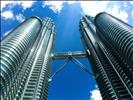

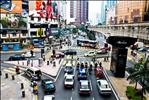






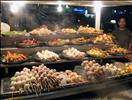


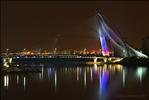


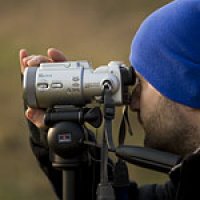
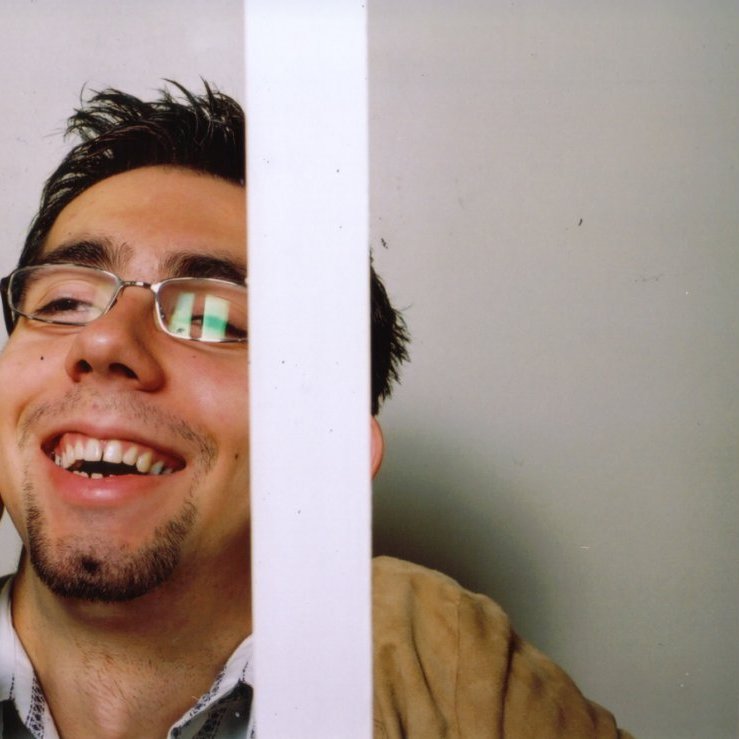
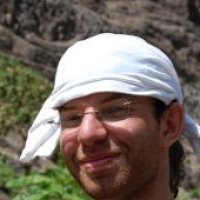

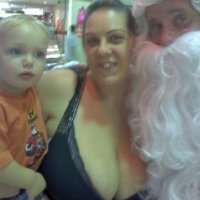

I liked
Three things that amazed me during my stay at hotel in Kuala Lumpur are the fabulous shopping malls, eateries of different regions and the public transport system in this place.I disliked
Nothing